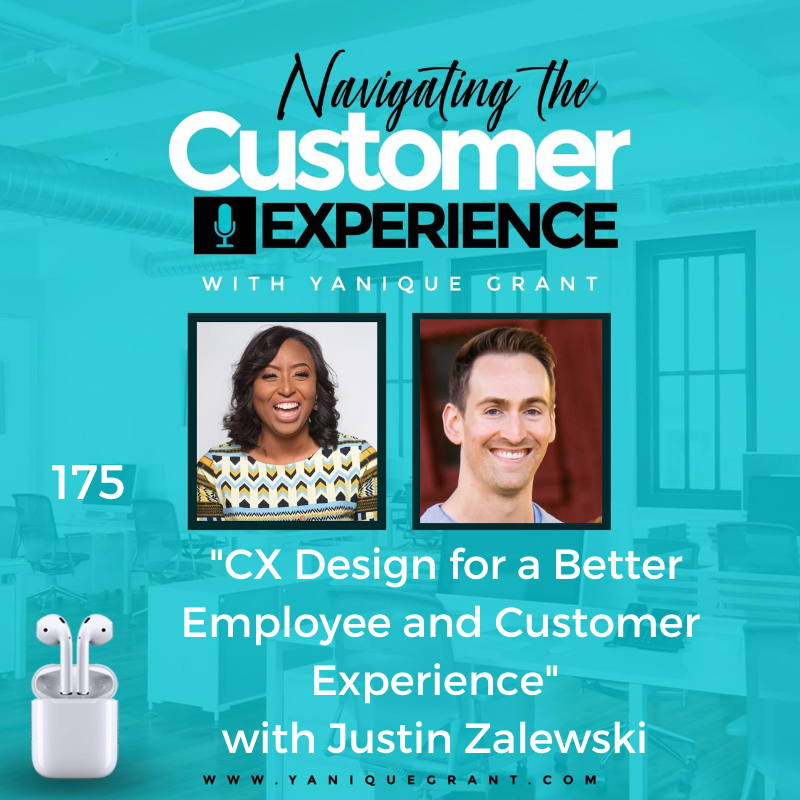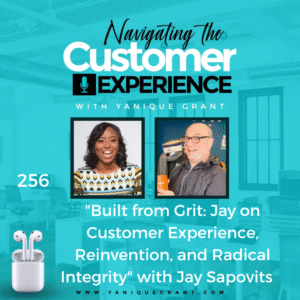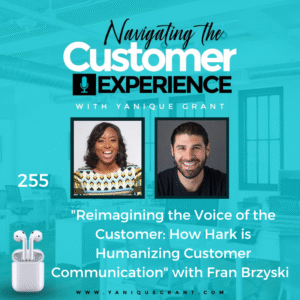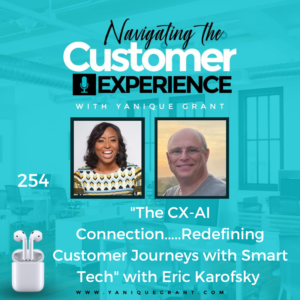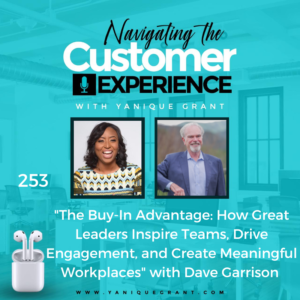Justin Zalewski is the Director of Product Design and Strategy at Studio Science. He leads a team of talented product designers and works with clients to solve business problems through design. He and his team are experts in rapid prototyping and running experiments to more quickly learn from and deliver value to customers.
He has led projects with clients ranging from market-leading tech companies to Fortune 500 brands. Some of his clients include Angi, Genesys, Simon, Stack Overflow, and Cummins.
Questions
- Now, could you share with us, in your own words, just a little bit about your journey, how you got to where you are today?
- So, customer and product design. Now, tell us a little bit about Studio Science. What is Studio Science and what does Studio Science do?
- So, maybe could you share with me one or two trends that you’ve seen in the customer experience space that you think is critical for a business to constantly be looking at to ensure that they are keeping current with the needs of their customer?
- Why do you think it’s important for not only the customer experience, but the employee experience to ensure that your alignment in terms of needs is not just on the CX end but it’s also on the EX end and what does that look like in terms of it being beneficial to both?
- Now, could you also share with us what is the one online resource, tool, website, or app that you absolutely can’t live without in your business?
- Could you also share with us what’s one thing that’s going on in your life right now that you’re really excited about? Either something you’re working on to develop yourself or your people.
- We do have a lot of persons that listen to this podcast, who are business owners, as well as managers and they believe that their companies have great products and services, but from time to time, they do lack constantly motivated human capital, so the people are not as motivated. If you’re sitting across the table from one of those persons today, what’s the one piece of advice that you’d give them to increase or improve their motivation and have a successful business?
- Could you also share with us Justin, our listeners would have tapped into this episode, they would like to connect with you. And so, they would like to know where can they find you online?
- So, before we wrap our episodes up, we always like to ask our guests, do you have a quote or a saying that during times of adversity or challenge, you’ll tend to revert to this quote, it kind of helps to get you back on track or get you refocused if for any reason you got derailed.
Highlights
Justin’s Journey
Justin shared that he started in the world of design and the way he started was a little more in the world of graphic design. And that led him into just kind of a natural curiosity into the more technical side of things. And so, he started to kind of branching out from just the visual design of things in visual communication into building things and figuring out how things work. So, getting into code, building websites, building apps. And that led him into product design.
So, figuring out what is the UX, the user experience of making sure that these kinds of things are intuitive, easy to use, fun to use, and really meeting customer needs. And that caused him to broaden his lens, especially the last 10 years and his time at Studio Science to broaden his lens, and especially adapt a service design mindset. So, looking across the whole customer journey from everything they’re doing, with a digital product, outside of a digital product, their in-person interactions, the way that the organization delivers a service to a customer.
And one of the things that he’s been really passionate about lately and getting really excited about is how they use their design skill set and looking through the business world with that lens, to bring people together, bring siloed disparate departments together in pursuit of that common goal. Because really, everybody wants to serve the customer, we’re all just coming at it from different angles. And so, where he’s at today, is being able to use that design skill set, not just for improving visual design or UX, but actually to bring people together to create a better service and a better experience for customers.
What is Studio Science and What Does Studio Science Do?
Justin shared that Studio Science is a design and innovation firm. And their purpose is to help businesses designed with people as opposed to for people. So, they saw this in a variety of ways but if he could sum it up, it comes down to this, customer experience depends on meeting people’s needs and people’s needs are constantly changing. So, businesses have to constantly change too. And they know that this is hard. So, where they come in is they help businesses, 1) Understand what their customers need. And then 2) Deliver solutions to meet those needs. Obviously, that’s super vague.
So, to get more specific, they do a lot of work with large enterprise companies. And they’re in a lot of cases in a place where they’ve enjoyed long term success but what got them here won’t get them to that next stage.
So, more often than not, the way these large companies are set up, doesn’t allow them to innovate well, because they’re not built to move quickly. There’re all kinds of bureaucratic structure that’s in place, a lot of times for understandable reasons, but it ends up hindering this kind of evolution that’s needed to meet customer needs.
So, when they speak with people that are responsible for advancing customer experience in organization like this, a lot of times they’re frustrated, sometimes even feeling hopeless, because they’ve been banging their head against the wall trying to make progress in their organization.
But that’s where they can come in, they can act as their modern design team from the outside, when it’s not possible to operate that way from the inside. So, they can build an understanding of customer needs, match that up with business goals and then mentioned, they are big fans of rapid prototyping, they prototype those solutions so you can learn really quickly without having to build and roll out a full solution. They’re building to learn rather than building just to launch things and that’s the best way to align what a business is offering to what customers actually need.
Me: So, Studio Science is on to some great stuff there.
Trends in the Customer Experience Space for Businesses to Look at to Keep Up with the Needs of Their Customers
Me: Now, what has been your experience? I noticed you mentioned in ensuring that you deliver a great experience to your customers, because businesses are continually changing, you need to continually change or customers are continually changing, rather, you need to continually change. So, maybe could you share with me one or two trends that you’ve seen in the customer experience space that you think is critical for a business to constantly be looking at to ensure that they are keeping current with the needs of their customers?
Justin stated that he thinks it all comes down to measuring the right kinds of things. And what is challenging and what we see a lot of organizations struggling with, is that the things that are easiest to measure, those quantitative kinds of things where if you’ve got a digital product or website, you can throw up Google Analytics or your platform of choice super quickly and you can measure all kinds of all kinds of the what’s, how many people are visiting, how many people are doing this kind of thing within their app, and that’s all valuable. But to really get to the deeper levels of evaluating customer experience and figuring out are we headed in the right direction? Are we actually solving a need for our customers?
You got to dig into the qualitative side of it as well, the why behind it all to figure out like alright, we can see that this thing is happening, our customers are downloading our product or they’re signing up for this offering, they’re buying these things on our ecommerce store. But why are they or aren’t they doing this, this thing we thought would be a big hit.
And so, that’s where he thinks digging into just making sure that you’re tied in with your customers, via any variety of methods for qualitative research can be that interviews, workshops, developing relationships like having a customer advisory board, where you’ve got those close relationships with customers, where you can just go and talk to people really quickly where there’s not a chance for that barrier and that space to develop between a business and their customers, because that’s what leads to misalignment and shipping things that don’t actually fit what the customer needs.
The Alignment of Needs for Both Customer Experience and Employee Experience
Me: Brilliant. Now, in addition to what you’ve shared, could you also share with us why do you think it’s important for not only the customer experience, but the employee experience to ensure that your alignment in terms of needs is not just on the CX end but it’s also on the EX end and what does that look like in terms of it being beneficial to both?
Justin stated that they are great questions, because there’s no way to separate the customer experience from the employee experience, the employees are what makes it possible to actually deliver a customer experience, and especially a good customer experience. And there’s also, and he’s sure we’ve all seen these kinds of things happening or read about it in the news with Amazon or otherwise, it’s also very possible for an organization to deliver a great customer experience at the expense of the employee experience, and how that’s not sustainable and it allows all these problems to grow and fester.
And so, it’s really impossible to separate the two. And so, what he advocates for and what Studio Science advocates for is actually bringing the two together and there’s a variety of different ways to do this.
But they found the best way is through a service design approach. And so, there’s a lot of different aspects to that but one example and one really helpful tool that’s part of a service design approach is to develop a service blueprint.
So, you might be familiar with a customer journey map or you’re mapping out here’s what a customer is experiencing at different stages of their journey with us. Think of a service blueprint as adding on another layer to that of not just what is the customer experiencing, but what is the business doing to enable that experience. What are our people, what is our staff doing? What kinds of technology do we have in place that is enabling that experience?
And especially mapping it out of that high level allows them to pinpoint like what are the points of friction and why?
Like what’s happening. But also, it’s a great tool to bring people together and figure out, like we can see there’s an issue here, is that a technology problem? Is that something where a department is just totally overwhelmed and overloaded, and we haven’t really developed an understanding about that today. And then how can we solve that together rather than just trying to brute force a better experience in a way that’s just not going to be feasible because people can only do so much.
App, Website or Tool that Justin Absolutely Can’t Live Without in His Business
When asked about online resources that he cannot live without in his business, Justin shared that for him, it is Slack. And so, especially in this remote collaborative world, they’ve been on Slack for several years, even before the pandemic where they really leaned into remote work, and he knows other folks are on different systems. Microsoft Teams has gained a lot of ground, he’s a big Slack fan. He thinks it’s a way to cut down on email, really emphasize the quick kind of asynchronous collaboration that just helps a business run and helps bring people together.
Books that Have Had the Biggest Impact on Justin
When asked about books that have had an impact, Justin stated that it’s so hard to narrow down to a couple but the ones that come to mind most readily are one he read a while back is a book called Thinking, Fast and Slow, his name is Daniel Kahneman, behavioral economics that wrote about basically like two systems of thinking like our fast thinking brains and our slow thinking brains and all kinds of like the biases that develop because of how we’re built to think. And it just has all these implications that has really changed the way he thinks about a lot of his own interactions in his own life. But also, when he tries to empathize and understand like how other partners and colleagues in business are looking at things or how their customers are perceiving a solution or their experience, it’s been really eye opening.
The other he would say is Inspired: How to Create Tech Products Customers Love by Marty Cagan. It’s a book really all about product management but it’s, he’d say it opens up some lines of thinking even outside of product management, really just about how to rapidly iterate, really learn quickly from customers, and all the different ways you can test solutions in a really lean, cheap way without needing to invest a lot of money into it.
What Justin is Really Excited About Now!
When asked about what’s something that is going in right now that he’s really excited about, Justin stated that it’s a great question. So, he’s really excited for himself and then also to share this with his team and try to foster this kind of mindset of making space. And it seems like it’s only snowballing and getting more common these days that the people are just very scattered, torn in a lot of different directions.
And so, bringing focus and creating space to be focused on the highest priority things he thinks is a really valuable thing, he won’t say it’s undervalued, because there are a lot of people that are beginning to emphasize that more and more. But it’s increasingly challenging in the world, just because there are so many distractions, so many things calling for our attention. And so, finding ways to focus, to prioritize and to really be mindful about what we’re spending time on, is something he’s been really focusing on lately for himself, but also trying to bring that to those around him and his team.
Advice for Business Owners and Managers who Lack Constantly Motivated Human Capital
Me: Now, we do have a lot of persons that listen to this podcast, who are business owners, as well as managers and they believe that their companies have great products and services, but from time to time, they do lack constantly motivated human capital, so the people are not as motivated. If you were sitting across the table from one of those persons today, what’s the one piece of advice that you’d give them to increase or improve their motivation and have a successful business?
When asked about one piece of advice he would give to business owners and managers to increase or improve motivation and have a successful business, Justin stated that he’s sure these folks have heard a lot of things about making sure people have the motivation from a strong mission and vision for a company and that is all really critical and it’s hard to do much without that. But if he can add something new that they might not have heard as much about before, it’s the concept of involving the employees and even partners, anybody that you’re working with, to deliver value to your customers. Involving them in the process of co-creating solutions, rather than dictating solutions and process to them.
And so, when you’re thinking about, “Hey, like, we’re going to develop this new product, we’re going to sell it this way, we’re going to deliver it to customers this way.” Rather than it being entirely a top down approach, this is strongly urge but forced upon the employees. He thinks you’d be surprised how powerful it is to actually involve the employees and the team in coming up with the solution.
And so, some of the ways that they do that are actually just starting by talking with employees, but also getting their input, running workshops like, “Here’s the problem that we’re trying to solve. We know that you live in this world every day, like what do you see, what’s your perspective?
And how can we actually like make this kind of outcome for the business?”
And he thinks bringing those perspectives together, one it is proven to actually generate better solutions and more feasible solutions because it comes from the people that actually be carrying out work. But two, it gets people involved and gets their buy in on the solution and helps them feel more involved rather than a cog in the machine.
Me: Okay. Awesome. So, a high level of inclusivity so they feel like they’re a part of where the company is going, the decisions that are made and of course, you get greater buy in, which means you get, hopefully increased motivation, and people feel like they’re a part of something bigger than just the operational stuff that they do every day.
Where Can We Find Justin Online
LinkedIn – Justin Zalewski
Website – www.justinzalewski.com
Website – www.studioscience.com
Quote or Saying that During Times of Adversity Justin Uses
When asked about a quote or saying that he tends to revert to, Justin shared that he’s bad at quotes, but he’ll give kind of the sentiment behind the idea. And he’s sure there are folks that have said it better.
But it comes down to like, there’s only so much you can do at one time. He will attempt to quote something he read from recently where someone that took a very sensible approach to life of not chasing after, always the next thing always bigger and better.
But realizing that all you can do is worry about like, “What am I going to do today to make the most out of today, rather than worry so much about the next week, next month, next year, which I really have little control over.”
So, he thinks taking a reasonable perspective of here are the things that I can control and influence today and here’s the things that I can’t, and I can just do my best to be prepared for when those kinds of things do come up, really helps him to just take a little bit of the pressure off in moments of stress and refocus himself to what’s really important.
Me: So, just wanted to tell you, thank you so much for hopping on to our podcast, Navigating the Customer Experience and sharing some of these great insights as it relates to customer experience design, as well as ensuring that as an organisation, you look to not just satisfy the needs of your customers, but you also your employee needs. And the value that you brought to both myself and our listeners, I think is really great at a time that people are really looking at, how are they going to position themselves for 2023 as we exit one calendar year and jump into the next? And what are some areas that really need to be given that high level, super focus to ensure that they can stay on top of their game in their industry and really give their customers what they’re looking for both on an internal and an external level. So, thank you so much.
Please connect with us on Twitter @navigatingcx and also join our Private Facebook Community – Navigating the Customer Experience and listen to our FB Lives weekly with a new guest
Grab the Freebie on Our Website – TOP 10 Online Business Resources for Small Business Owners
Links
- Thinking, Fast and Slow by Daniel Kahneman
- Inspired: How to Create Tech Products Customers Love by Marty Cagan
The ABC’s of a Fantastic Customer Experience
Do you want to pivot your online customer experience and build loyalty – get a copy of “The ABC’s of a Fantastic Customer Experience.”
The ABC’s of a Fantastic Customer Experience provides 26 easy to follow steps and techniques that helps your business to achieve success and build brand loyalty.
This Guide to Limitless, Happy and Loyal Customers will help you to strengthen your service delivery, enhance your knowledge and appreciation of the customer experience and provide tips and practical strategies that you can start implementing immediately!
This book will develop your customer service skills and sharpen your attention to detail when serving others.
Master your customer experience and develop those knock your socks off techniques that will lead to lifetime customers. Your customers will only want to work with your business and it will be your brand differentiator. It will lead to recruiters to seek you out by providing practical examples on how to deliver a winning customer service experience!

